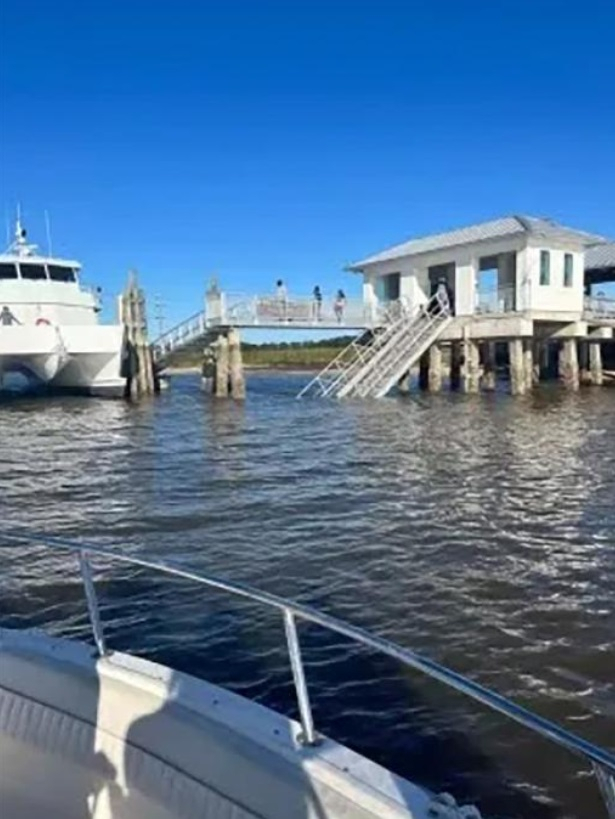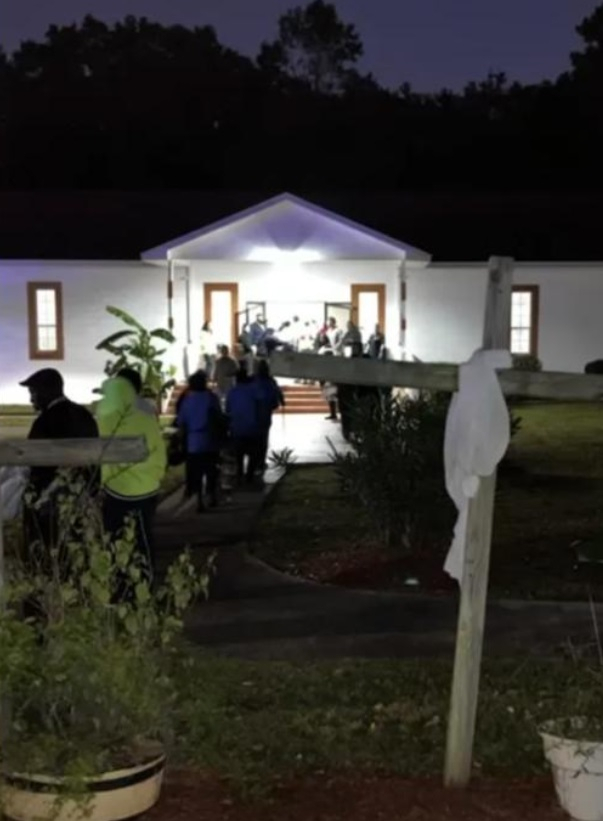At least seven people were killed on Saturday when a section of an aluminum ferry dock collapsed on Georgia's Sapelo Island during a gathering that was honoring the descendants of Black slaves. The devastating collapse caused several people to fall into the water around 4:30 p.m., resulting in the deaths of seven people.
Among those killed was the chaplain of the state agency responsible for managing the dock, according to the Georgia Department of Natural Resources. Of the eight people transported to the hospital, six are in critical condition. Many of those who were killed were elderly, with one person reportedly using a walker at the time of the incident.
Sudden Collapse

The Georgia Department of Natural Resources, which manages the ferry, said that the cause of the gangway's failure and collapse is yet not known to them. "Many of those who were on the ramp and many of the injured and dead are elderly," said McIntosh County Commissioner Rogert Lotson, who added members of the McIntosh County Shouters were also among those who were swept into the water, The Current reported.
"It is a big tragedy for the county."
Late Saturday night, U.S. Coast Guard ships continued searching for missing people after first responders faced delays due to the island's only access route being blocked.
ðŸ‡ºðŸ‡¸ðŸš¨â€¼ï¸ BREAKING: A ferry dock collapse on Sapelo Island, Georgia, claimed the lives of seven people, plunging several attendees into the water during a Gullah-Geechee community event.
— TabZ (@TabZLIVE) October 20, 2024
—> The footage shows the ferry dock taken shortly before the collapse. pic.twitter.com/CxHTiWlU7j
Georgia Department of Natural Resources (DNR) spokesman Tyler Jones said that many of the victims were elderly, including a chaplain from the Georgia Department of Natural Resources. Bystanders, including university students attending the festival, leaped into the water in an attempt to rescue those who were drowning.
Bill and Mary Humphrey had boarded the ferry moments before the dock collapsed. They said they saw four bodies floating face down in the current, being carried out to sea, according to the outlet.
"It was a slow motion kind of thing. It was just going down. They were all going down in the water," Bill Humphrey said, with his wife adding that "it was the worst thing."
"I will never get that picture out of my head."
A witness who assisted in rescuing people after the collapse told the outlet that "there wasn't a soul who wasn't trying to help somebody." Other witnesses described people pulling victims from the water and administering CPR, while the ferry crew tossed life preservers to those in need.
Complete Chaos after Collapse

According to Jones, at least 20 people were standing on the dock when the gangway collapsed, sending them into the water. Of those, eight were hospitalized, with six in critical condition.
The DNR oversees the dock and operates the ferries that transport passengers between the island and the mainland.
Rescue teams from the U.S. Coast Guard, McIntosh County Fire Department, and the DNR continue to search the waters using helicopters and boats equipped with side-scanning sonar, officials said. While the cause of the dock's collapse remains unknown, Jones confirmed there was no collision with a boat or any other object.
"The thing just collapsed. We don't know why," he told AP News, noting that a team of engineers and construction experts is expected to arrive early Sunday morning to investigate the cause of the walkway's failure.
The incident happened as crowds gathered on the island to celebrate its small Gullah-Geechee community, descendants of Black slaves, for Cultural Day, according to ABC News.
The annual event highlights the small community of Hogg Hummock on the island, which is home to a few dozen Black residents and features dirt roads and simple houses built by former slaves from Thomas Spalding's cotton plantation, the outlet reported.









